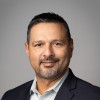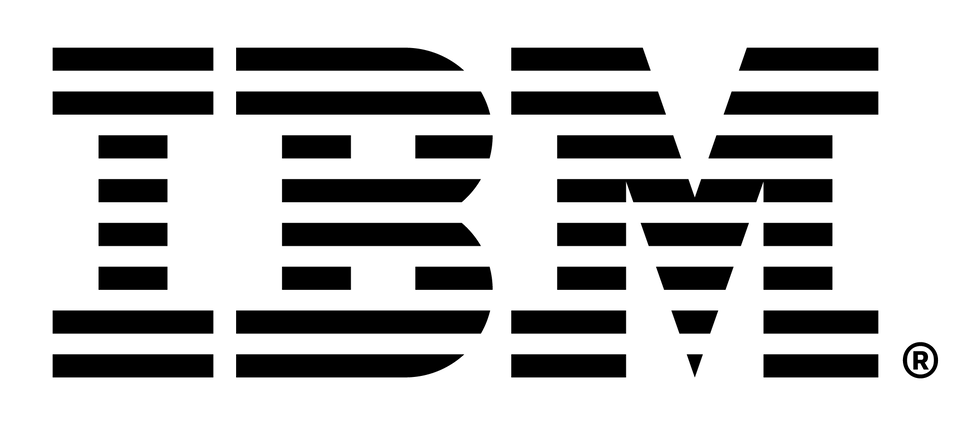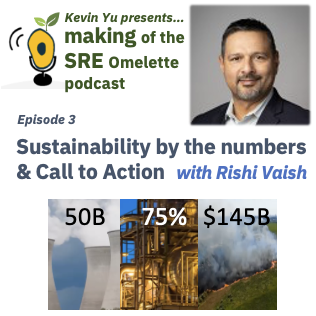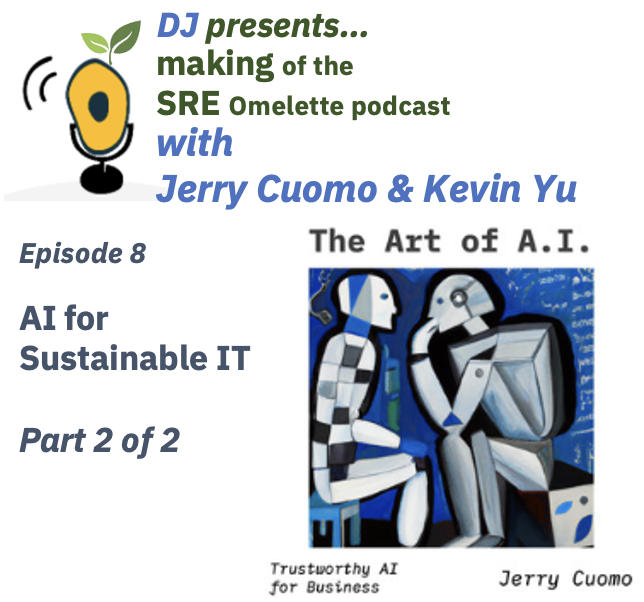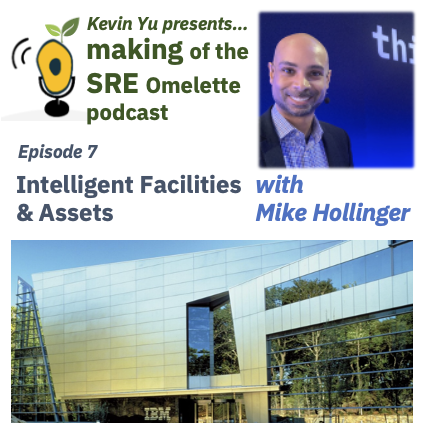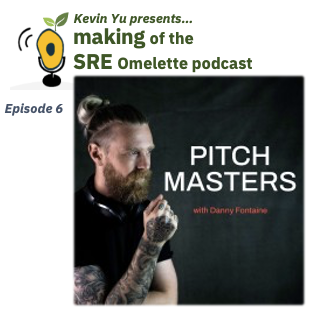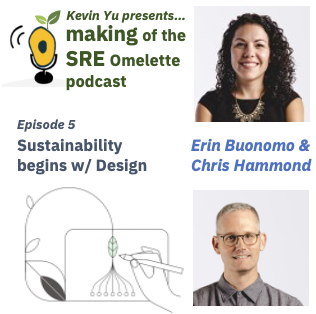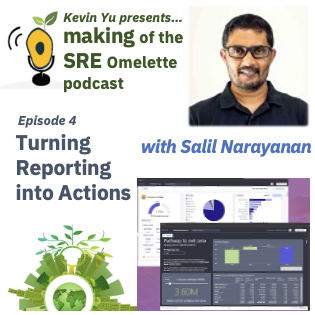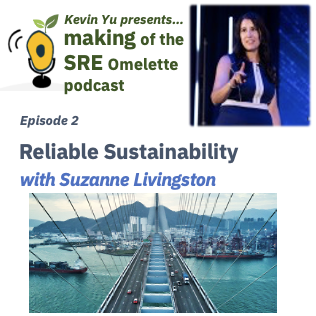Episode 3 - Sustainability by the Numbers & Call to Action for SRE
- 0.5
- 1
- 1.25
- 1.5
- 1.75
- 2
Rishi Vaish: It turns out, if you want to absorb 50 billion tons of greenhouse gases, you would need to plant 1 trillion more trees on the planet today. And then again, 1 trillion is a big number, right? So the Amazon jungle has roughly 3 to 400 million trees. So you're talking about planting three Amazon jungles to absorb just one year's emission, not the few decades that we've been doing this in the past.
Kevin Yu: Hi everyone. Welcome back to another episode of Making of the SRE Omelette podcast, where we talk about how we achieve business and client success via the practice of site reliability engineering. Season two is all about how the practice of SRE can play a big part in helping and leading us to a more sustainable future. Here to highlight why we should act now is Rishi Vaish. Rishi is a VP and CTO of IBM Sustainability Software. He has championed IBM sustainability efforts, formulated strategy, and built products to help make it possible for IBM and our clients to turn ambition into reality. I'm so excited to have him here with us today. Welcome to the show, Rishi.
Rishi Vaish: Hey, thank you so much, Kevin. Great to be here. I think you have an amazing show. You've got a superb theme. I love talking about sustainability. Looking forward to this.
Kevin Yu: Thank you for the kind words, Rishi. Really appreciate your support as well as motivation to get me started in the first place. I appreciate you spending the time here with the community to talk about your favorite subject of sustainability.
Rishi Vaish: Absolutely my pleasure.
Kevin Yu: Rishi, can you get us started by sharing with us what does sustainability mean to you?
Rishi Vaish: I think it's a broad term. I think when most people think about sustainability, they tend to weigh in a little bit more on greenhouse gas footprint and carbon footprint. And yes, that's definitely one of the key aspects of sustainability. But I think it extends over all three dimensions of environmental, social, and governance and just being ethical in the way that you do your business all the way from front end, what you're selling customers, to downstream to your supply chain, the way you source goods, and the way you treat people throughout that whole life cycle.
Kevin Yu: So it is definitely much more than just carbon footprint, or as Christina cautioned us, carbon tunnel visioning.
Rishi Vaish: Definitely. Yeah, it's much more than that. I think we do have a massive problem with carbon, for sure. A lot of our portfolio is structured around that. I think depending on who you listen to, the problem is super urgent to just urgent. But I don't think anyone can be casual about it anymore.
Kevin Yu: Speaking of taking it more seriously, Rishi, I remember listening to your keynote at SRE Conference at IBM, and you spoke of sustainability by the numbers. That was a powerful message. Can you share it with the audience here?
Rishi Vaish: Absolutely, Kevin. I think this is one of my favorite conversations with anybody who's just tuning in. Hey, if you're an ace in sustainability, you probably know this already. But I like to think about sustainability in terms of a few big numbers. I certainly respond to big numbers rather than anything else. One big number, or say, one dimension is this, what impact are we having on the environment? One big number there is a number 50 billion.
Kevin Yu: Wow.
Rishi Vaish: That represents the tons of greenhouse gases that we emit into the atmosphere as a human species today. So, okay, the first time I came across the number 50 billion, I'm like, " That sounds big. What does it actually mean?" So it turns out if you want to absorb 50 billion tons of greenhouse gases, you would need to plant 1 trillion more trees on the planet today. And then again, 1 trillion is a big number, right? So the Amazon jungle, not the company, has roughly 3 to 400 million trees. So you're talking about-
Kevin Yu: Oh, wow. Yeah.
Rishi Vaish: ...planting three Amazon jungles to absorb just one year's emission, not the few decades that we've been doing this in the past. So I think we are having a real impact on the environment. Another big number to sort of gauge how big that impact is is 145 billion. That represents the damage that climate and weather had in the US in the year 2021. So just in one year, we lost life, we lost property, we damaged homes, we damaged industry-
Kevin Yu: Fire, flood.
Rishi Vaish: We damaged agriculture through either floods, fires, tornadoes, hurricanes, you name it. In just one calendar year, that's 145 billion. And then this impacted everyone. I live in California. Fire's a huge problem here. We've had people, colleagues of ours in fact, that have been impacted by severe hurricanes up and down the East Coast. Look, it's just getting worse. This season, in fact, we had snow down the bike path that I go riding here in California. I live in the Bay Area. And I've been living here 25 years. On that particular path, I have never seen snow before. This time there were two inches of snow.
Kevin Yu: Wow. I mean, we had ice in Texas, right?
Rishi Vaish: Absolutely, yeah. I would take those two numbers as a good proxy for what the impact is and what can we actually see with the climate change. What impact is this having on people, and how are they changing their behavior? I think that's the other interesting dimension. One number really surprised me. It's 75%. So it turns out that 75% or three out of four people are likely to change the brand that they buy from based on their knowledge of its sustainability and environmental and social profile. So that's a huge number. So imagine yourself, you're walking down your favorite grocery store aisle, and you see four people in front of you. Three of them might choose a different product when they pick it from the shelf if they just knew what the sustainability profile for that product happened to be. That's massive. That gets the attention of CEOs and CMOs. And I think the last big number I'll leave you with is truly big. It's 68 trillion. That represents the dollars of funds that climate conscious investors control. These investors choose to invest these funds in companies that are sustainable and choose to not invest in companies that are not sustainable. And just to give you a sense for how big 68 trillion is, because again, that number didn't really add up for me when I heard it the first time. If you had access to that, Kevin, you would be able to buy every single company on every single public stock exchange on the planet, and still have money left over to buy a few Apples. And when I say Apples, I'm not referring to the fruit. I'm referring to the company.
Kevin Yu: The company. Yeah. Yeah.
Rishi Vaish: So that gets the attention over the board of directors. They need to make sure that their companies are investing in a responsible social and environmental way so that they can then attract funds from investors as well.
Kevin Yu: Those are some amazing and also scary numbers. I'll see if my memory is good enough to recall and get into some in more detail. You mentioned that the damage of climate change has led to over 140 billion in a single year. Now, Rishi, we must have saw it coming. Was there an aha moment that led to countries and companies to say, " We must act now"?
Rishi Vaish: Yeah, I think that's a good question. I think the aha moment has been different for different people in different parts of the globe. The way I look at this is if you track the direction of environmental legislation, I think one of the earliest countries to have it is probably Australia, then it was Europe. I think California has been noticing this for a while, and we've put this on our agenda for quite a bit of time, but not all the other countries in the world, including the US at a federal level, have really enacted something severe enough. So I think the realization was there for a while. I think people have been going to climate summits for a while and recognize the fact that this is something we've got to watch out for. I don't think the average person has experienced this kind of, I'd say, dramatic and drastic weather such that we've been doing over the last couple of years here. So I think it's becoming much more democratized, the understanding that weather and climate is really impacting all of our lives in a much more extreme way than ever before.
Kevin Yu: The other number that was interesting to me was 75%. That is 75% of consumers will choose a brand that is more sustainable. Rishi, what is your inside percentage of people if the sustainable brand is more expensive?
Rishi Vaish: I think there's probably... Of those 75, I would guess 25% might still be insensitive to a little bit of extra price. So, yes, I think there's some amount of price elasticity built in there, but I think as we go forward, Kevin, it's just going to become a normal way of doing business. You're not going to ask so much. It's just going to be a requirement for doing business. Another way to think about this one is when for the first time, people had to get their financial statements audited to be listed on a public stock exchange, I don't think it was a popular thing to do. It was like, "Well, guess what? If you're going to take public money, then you sort of need to go through these basic checks and balances." I'd like to see the world get to the point where we're not having to convince people to get a more sustainable brand. We just have sustainable brands.
Kevin Yu: That is a great point. I always feel that company or people need to be motivated to change their behaviors. So either a carrot or a stick to keep on adding analogies to this podcast. Rishi, what stage do you think we're in right now with sustainability behavior changes?
Rishi Vaish: I know it's viewed as carrot and stick. I don't think it necessarily has to be that way. There's enough correlation to show that if you operate your business more efficiently, you will also be operating in a much more carbon efficient manner. So there's a direct correlation between operational efficiency, which you just need to do to run a good business, as well as running it efficient from a carbon footprint perspective. So I think to that extent, it's a built- in incentive to go do that, and I think we need to help companies connect the dots together. I think that's where I see a gap in the market today, and that's sort of the mission of our portfolio. I think on the social side, we shouldn't have to ask that question. I think people should operate their businesses in a manner that's fair and that should just be table stake for operating businesses.
Kevin Yu: Speaking of operational efficiency, it is a perfect time to bring the conversation closer to SRE. Rishi, you have the audience here, site reliability engineers, both people who are practicing or inspired to join the profession. Any call to action you have for the community on what people can do to help?
Rishi Vaish: Absolutely. If you go back to the pie chart of where emissions come from, depending on which surveys you look at and how you count it. Somewhere between seven to 10% of emissions today come from data centers, and this is only about to grow. ChatGPT has been in the news. You would've had to be under the rock for a long time if you miss that. Most people on this podcast are going to be techie. So the lowest of the underlying technology is foundation models and these large language models. They have a really, really large parameter set to get tuned. And the short version of the story is in the amount of energy it takes to train one of these large models, you could power a medium- sized city for a few days, okay? So as site reliability engineers, you are operating infrastructure that does consume a massive amount of power. And much like I said, anytime you focus on making your business more efficient, it's very highly likely to have a positive carbon energy footprint impact as well. Same is true with SRE. I would ask all of your engineers to be cognizant of what is the capacity that you've got provisioned in your cloud today? Do you need all that capacity, yes or no? Can you scale things up, which is great, but when you don't require the capacity, can you scale them down as well? I think super important to do. Are you using the most efficient form of technology stack today, and what can you do to modernize it to make things much more streamlined? Simple. It's funny, I've been in this space of, say, infrastructure management for a while now. Just turning machines off when you leave a room, turn the lights off when you're done with a machine in your data center, power it down. With a virtual machine, shut it down and reclaim that capacity. So all the way from simple things to complex things like redoing your architecture can have a massive sort of benefit on footprint. One of the thing I'll mention, which not a lot of people think about, but you can also choose what data center you want to deploy your assets into. Much like that 68 trillion of investors can pick the companies they want to invest in. You can say, " Hey, I want to go deploy my footprint on a data center that's powered mostly by renewable energy." In that case, yes, you're going to consume an energy footprint, but if the energy footprint is renewable, you've suddenly dropped down the carbon footprint of your workload quite dramatically. Is there any aspect that you'd like me to dig into more, Kevin? Because I think making workload efficient, as you know, is one of the key OKRs I've got from my team for sure.
Kevin Yu: Interesting you mentioned efficiency. I remember talking to Jerry Cuomo and Ron Baker that I felt performance tuning and optimization is a lost art. This will show my age, but I remember JVMs were only 500 megabyte or, at most, a gig. And we had only one or two of them, and it takes days if not weeks and months to get more. And because of that, we had to do profiling to understand what were consuming the memory, number of compute cycles, and in turn, make the code more efficient. These days, I feel we are spoiled with technologies that we can just easily scale up and down, as you mentioned. So the perception is that it is not worth the effort to spend the time to optimize. Rishi, should we bring more of that art back to your point of being efficient?
Rishi Vaish: Yeah, certainly. I think there's one other aspect there, Kevin. The more and more workloads you've got that are cookie cutters versus unique, the easier it is to achieve some of that scale as well. Part of the benefit of the cloud is just rapid scale. That's the reason mobility and what not were born is to be able to run Google Cloud and scale these workloads up. But they were able to achieve that efficiency because they did make them pretty cookie cutter. You could swap workloads in and out without too much pain and very low overhead of startup time, et cetera. So I agree with you. I think we could spend a lot more time making our workloads efficient versus just wrapping them up in containers and running them, and it's going to be something that I think comes back not just because of the efficiency on cost, but I think also because of the efficiency on carbon.
Kevin Yu: Yeah, for sure.
Rishi Vaish: Hey, I have a question for you, Kevin.
Kevin Yu: Yeah, go ahead.
Rishi Vaish: You've been in the SRE profession for a really long time. As you've spoken to some of other folks in the audience, what's their take on sustainability and energy and footprint or just raw efficiency? I'm curious what you've got from some of the other folks you've been talking to.
Kevin Yu: Interesting question, Rishi. I will say I haven't yet got organic conversation that started from that perspective. We had some of those when we were running the Hackathon, but typically the conversation has often been, " Hey, let's automate to reduce toil. Let's right size to reduce cost. And oh, as outcome of that, we are also contributing to be more sustainable." I do think it is a great question to get us to turn it around, in that, let's start the conversation by asking how can we be more sustainable, and with it surface things we can do in the practice of SRE to contribute to it. I would say, Rishi, let's come back to this in a few months time and see how we have changed it around to start the conversation from the sustainability perspective.
Rishi Vaish: Absolutely. And the reason I'm asking, Kevin, is as you speak to a bunch of different people and you have so many different people listening to your podcast, just seeding that conversation and that question to every one of them I think would have a massive impact.
Kevin Yu: Yeah, yeah. No, I think that's a really good questions to ask. I love it. Thank you.
Rishi Vaish: Yeah, absolutely. I'll give you one interesting use case. I won't name names because we're not allowed to, and we're still in the process of working through this. But so we've talked about energy a fair amount, but waste is another big aspect of sustainability. In data centers, the way people power up servers, you plug in power, but almost all of the racks have a UPS tied to them, like an uninterrupted power supply to take care of fluctuations in the inbound power. That UPS has usually batteries that have to be recycled. Lithium ion batteries are the most typical kind. Now, picture a data center that has thousands and thousands of racks and thousands and thousands of these UPS batteries. These batteries have to be monitored for whether they have enough capacity and then yes or no, they have to be swapped out. And when they're swapped out, since it's not an environmentally friendly product to just dispose of, you need to have a good idea of where you're storing these batteries and have you recycled them appropriately, yes or no. So depending on which side of the SRE profession you're on. So you're in that data center profession as well, you can definitely use some of our technologies. I'm not going to pitch our products directly here, but you can certainly use some of our technologies to keep track of all of these kinds of assets as well and make sure that they're being responsibly tracked, they're being responsibly disposed of. So it is not just software, I guess, was my point. For people who mess with hardware, it's a hardware challenge as well.
Kevin Yu: Rishi, it is interesting you mentioned UPS. In fact, just last year, I had to replace the UPS I have at home. Instead of buying a new UPS, I was happy to see that I could just replace the battery. So there were some savings as well as being more sustainable. However, similar to all things powered by batteries, to improve the lifespan of them, typically the recommendation is not to charge them to 100%, but what are those batteries charged at for the UPS? 100%. So I agree with you. Perhaps there is a solution to improve the life of the batteries or even are there more sustainable ways of the what if than a UPS?
Rishi Vaish: Absolutely, Kevin.
Kevin Yu: Thank you for another great call to action. And, Rishi, you got me thinking, when SRE started, it was very much to balance the fight between operation and development. Because if you pay me to keep lights on and to keep the SLA, then the easiest I can do is to not let people make changes because that will minimize my risk. And the same is true. Rather than just provision enough capacity, it is safer for me to over- provision because I know it is tough to explain to my VP, " Oh, we were done because we tried to save some electricity." And perhaps, and sorry to put you on the spot, as a senior business executive, Rishi, what would you say to practitioners who may worry about that?
Rishi Vaish: I have a pragmatic point of view on this one, Kevin. Sometimes, you are the cloud. We have products, I mean you know these, that we operate in our portfolio where they sit on physical servers, they're plugged into actual power supplies and dual networks, et cetera, et cetera, and we operate them. In that case, if you are the cloud, the best thing that you can do is give your customers, which in this case would be application authors, the best possible insights into where they could achieve efficiency. That way, you could accommodate more workloads in the same physical infrastructure. Think about it as the number of applications running per CPU, that density could increase. If you physically are the cloud, then you're somewhat limited in what you can do from a server perspective because they're physical machines. But you can guide people the right applications in terms of where to make that sort of constriction effort. I agree with you. You do need to plan for capacity. In fact, one of the products in our portfolio order management, which deals with e- commerce spikes at Thanksgiving.
Kevin Yu: Black Friday.
Rishi Vaish: That's a workload where it wouldn't be acceptable to say, " Hey, we ran out of machines." So you do need to price that in. But even though those questions come up pretty often, they tend to be exceptions. And again, I won't name names, but I was just looking across a whole bunch of different development teams and looking at what the footprint for development instances was on cloud. And it's remarkable how many people don't even know that they have these machines running from some project they did a year ago. So I don't think we're at this spot where the last thing left to do is for that one workload, that's mission- critical for three weeks in the year. I think there's a lot of opportunity behind that.
Kevin Yu: That's true. Yeah.
Rishi Vaish: And if you look at it, this is how Amazon got started. They had machines.
Kevin Yu: That's true.
Rishi Vaish: They would keep hitting their peak and saying, " Hey, guess what? Now we can rent the extra out for the remainder of the year." And they kept growing that business to the point where now this is a business unto itself. So yeah, hopefully that answered your question, Kevin. I think you can always look at things and turn them into an opportunity depending on how you're going to look in the problem.
Kevin Yu: Yeah. It is all a matter of perspectives, right?
Rishi Vaish: Yeah.
Kevin Yu: And, Rishi, I agree 100% on the development environment. Often it is overlooked. In fact, I probably have a few that I don't even know of. I better go check after this session. So, Rishi, thank you so much for sharing those wonderful stories and examples. I know you gave me so many ideas just over the last half an hour. And I have no doubt you have also inspired many listeners as well to jump on this great cause. Rishi, what would you say to a chief sustainability officer who may be listening to get started?
Rishi Vaish: I'm glad you asked that question, Kevin. I'll answer it in the context of SRE, but I think it applies more broadly today as well. I find that pretty often, most people think about the chief sustainability officer as someone who's going to help report and produce a report, like the impact report that IBM produced. And so the expectation is, " Oh, it's going to be a reporting activity. And yeah, that's it." I think as a chief sustainability officer, if you can demonstrate to your business owner, which in this case might be the person responsible for SaaS or operations, that you can actually help them get better insight into their operation and help them make their operations more efficient, and leverage that in the reporting function which is required, I think they will succeed much more. So the message would be build a partnership with those business executives that are running the operational processes, and show them how you can help them get more efficient, as well as leverage that in the reporting function for carbon and energy. Make it actionable. Help your business colleagues make it actionable so that they can make a difference in their own businesses too. I think that's the biggest gap that I see as I talk to our customers and bridging that gap I think will be the most successful for our sustainability officers.
Kevin Yu: I love that, Rishi. Knowing you are not alone in doing it and build a partnership, influence and collaborate to achieve the goals together. And, Rishi, any words or wisdom for the site reliability engineers as well?
Rishi Vaish: I think the biggest thing I'll say is we're actually at a super interesting time in the industry today. People talk about digitization and, yes, it's been going on for a long time. But this whole notion of companies completely switching to becoming software companies and specifically software as a service companies, I think is remarkable. I also think as site reliability engineers, you can also push the bounds on what you bring into that quote, unquote, " site" part of site. It used to be just thought of as data centers and applications running there, but applications run on edges, they run in cars, they run in so many different places, and they still need those applications to be reliable with some of the same tenants as SRE. So I think my guidance would be understand the fact that you're at a remarkable stage in the evolution of technology and software today. Look at some of the non- traditional tools. Look at what AI is doing in the space too. I've always liked to have some data scientists sitting with site reliability engineers to help assess what is the most efficient way to run this workload. I don't want to say look at ChatGPT, but leverage machine learning. I think it could really help in some situations. So stay abreast of these modern technologies. And then extend your reach into the applications too, so you can help the applications on top of that infrastructure run in a much more efficient manner.
Kevin Yu: That is a great takeaway using tools and data to help us and taking reliability engineering up to the lifecycle and influencing how we build it at the application tier. So, Rishi, in closing, and I'd like to go back to the inspiration of the omelette. What will be your ingredient and recipe for us to achieve a sustainable future?
Rishi Vaish: I look at it in four pieces. And I think if you close that cycle and you close it diligently, we'll get onto this journey of becoming much more sustainable. I don't think that we'll ever completely get there, but I think you've got to measure where you are today in terms of your footprint. So I think measurement is critical. I think reporting is the second thing. So being transparent about where you are, I think, is also important. In some cases, it'll be a stick, like you pointed out. In some cases, a carrot because you'll have customers buying your product. So it's measure, it's report. Analyze across your landscape where are those hotspots where you can actually make a difference. And the most important thing is then act, the fourth one. Close that loop and act. Make sure that you actually change the operational process itself. And then keep doing this loop over and over again, measure, report, analyze, and adapt. And I think that'll change you into an organization that's continuously going down this path of becoming much more sustainable. And as we expand this out to all organizations, I think we'll get there.
Kevin Yu: Measure, transparent reporting, analyze, and close the loop by acting and pivoting as needed. That is a great recipe towards a sustainable future. Thank you so much, Rishi, for spending the time with us.
Rishi Vaish: Thanks, man.
Kevin Yu: I also like to thank you, the audience, for listening as well. This is Kevin Yu of IBM Sustainability Software. See you on a future episode where we continue the discussion to surface how reliability engineering can help us arrive at a sustainable feature.
DESCRIPTION
Rishi Vaish, VP and CTO of IBM Sustainability Software takes us through Sustainability by the Numbers to give us context and scope of the impact of climate change and why we need to act now. Rishi also gives concrete examples of what we can do to make a difference.
In addition, he has a call to action for Site Reliability Engineers - from questions to get us to think of sustainability from the start, as well as considerations to be more sustainable from our roles.
Today's Host
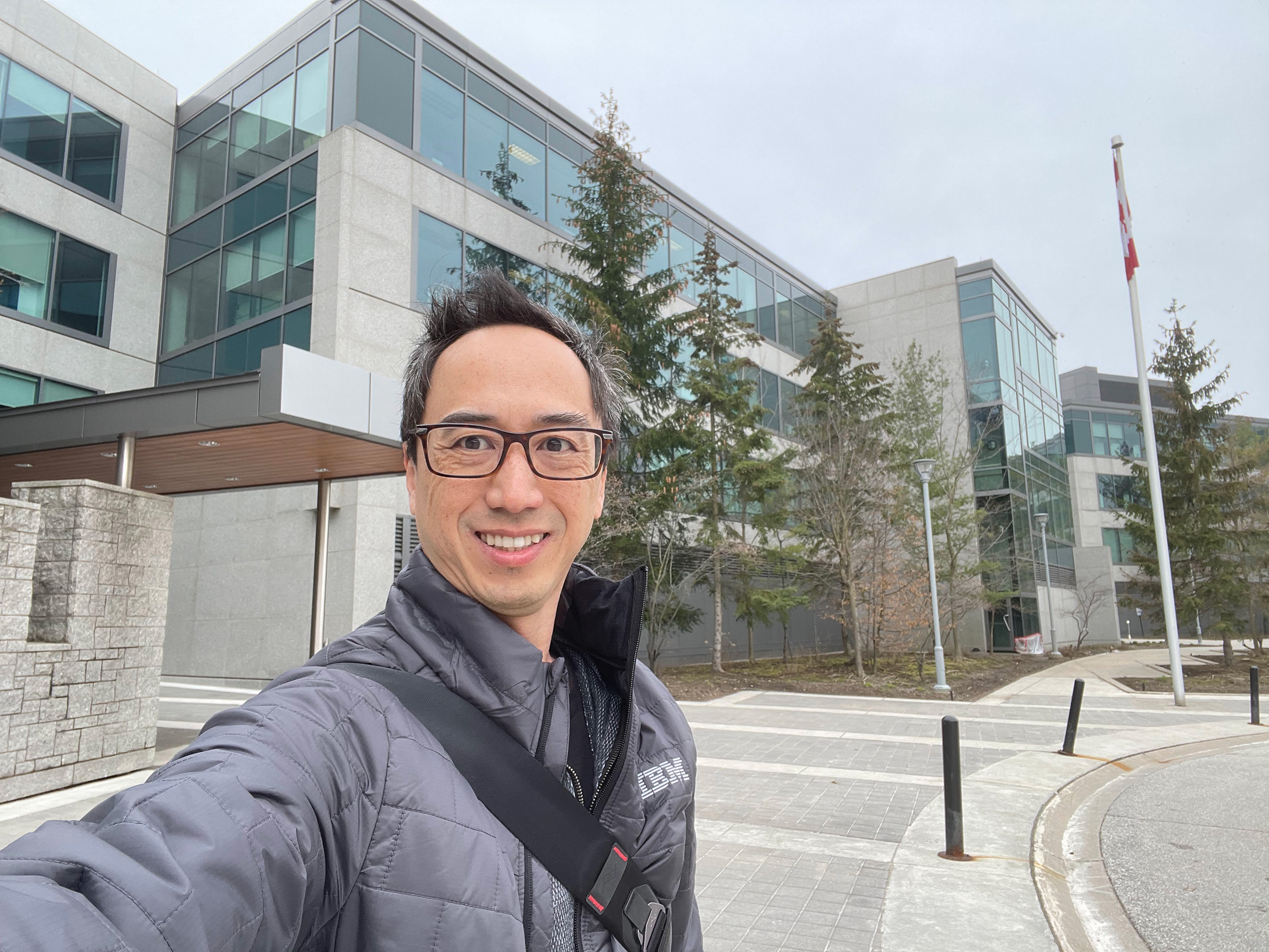
Kevin Yu
Today's Guests
